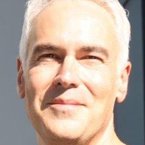
Narong Jongsirikul - Fotolia
CIO interview: Chris Barnicott, chief technology officer, SSE
Energy supplier’s CTO is driving innovation through AI, augmented reality and robotic process automation while still keeping the business running
Transforming a business digitally is a priority for most IT leaders, but orchestrating such a process while renovating the organisation’s core technology is quite a challenge.
Energy company SSE (formerly known as Scottish and Southern Energy), one of the “Big Six” group of key sector players in the UK, is currently undergoing that journey to support a business vision of “becoming a leading provider of energy and related services in a low-carbon world”.
However, the company has suffered historically with a diagnosis of having “too little information and too much technology”, according to chief technology officer (CTO) Chris Barnicott.
The former Centrica IT executive was hired in 2012 to address the complexities deriving from significant growth in a number of applications through various mergers and acquisitions since 2004. Significant progress has been made since then, which has enabled the company to introduce several innovation initiatives.
“There was too much resource focused on operating, too much complexity and instability, and too little insight and agility,” says Barnicott.
“One of my first steps was to get a holistic view of the environment and develop an application and technology strategy that would provide a more rationalised set of applications that deliver more business value.
“When you look closer at the role that technology plays in our business vision, and the energy industry, you can see an asset-based industry that is increasingly being disrupted by technology platforms.”
SSE has about 20,000 staff working across various competitive and regulated businesses delivering energy services to consumers, business and industry.

“With innovation, we keep a constant eye on the technology horizon, as well as what our competitors and other industries are doing”
Chris Barnicott, SSE
Its user base spans desk-based and mobile field forces, sometimes in remote locations – so opportunities to innovate are as diverse and numerous as the workforce that the IT function supports.
Artificial intelligence (AI), machine learning, virtual and augmented reality, as well as the internet of things (IoT) and blockchain, are all candidates to enabling this overall modernisation agenda, and several projects are under way.
Current digital transformation initiatives include, for example, a trial based on robotic process automation (RPA) technology.
“Our focus on a lean process improvement not only distills where the real value of the process is for the customer, but it also highlights where the friction can be removed and efficiencies gained,” says Barnicott. “This informs the technology approach and, on the back of this, we have implemented RPA.”
Another pilot aims to eliminate network transmission faults by using autonomous robotic devices to inspect live transmission overhead lines.
This, says Barnicott, brings in another element of digital transformation for the company as well as the ecosystem in which it operates – from regulators and academic institutions to technology partners and research and development teams from other organisations.
Read more CIO interviews
- Addison Lee’s global CIO is building a business strategy and ensuring the transport company has a flexible platform for growth.
- Fraser Ingram joined the Clydesdale and Yorkshire banking group as CIO just at the right time – as it was embarking on its digital journey.
- The CIO of logistics firm Wincanton, Richard Gifford, is in the process of improving its digital propositions and developing a digital supply chain, while dealing with legacy systems.
When it comes to choosing new innovations that might be applicable to SSE, Barnicott says that, to a certain extent, “technologies are calling” the business.
For example, when the IT team looked at alternative methods to train new field workers to learn to climb towers safely and get a feel for working at heights, developing this on augmented reality with a wearable device was the obvious choice.
“With innovation, we keep a constant eye on the technology horizon, as well as what our competitors and other industries are doing with technology,” says Barnicott.
A regularly evolving emerging technology roadmap is key to that process, as well as an internal development team that carries out in-depth research into each new technology possibility, producing demos and proofs of concept, says the CTO. This helps “bring the art of the possible to life” for SSE, he adds.
Despite SSE’s ongoing innovation pipeline, Barnicott is not interested in adopting technology for its own sake. Although enabling and emerging tools feature in the firm’s digital transformation plan along with a competency in process, he argues that a focus on people is also a crucial aspect of the strategy.
“We know the mindset of our people determines the organisation’s ability to embrace change – this is vital for our digital transformation,” he says.
Introducing a hybrid model
Addressing old challenges around SSE’s technology portfolio was key to digitally enabling the organisation, as its IT estate included a significant number of technically obsolete applications, hardware and operating systems. However, a balanced approach was required.
“The strategy would inevitably have to move away from on-premise monolithic architectures, but in parallel, balance this with the need to also develop and integrate new services with legacy and mainframe-based systems,” says Barnicott.
Technology at SSE has now evolved to a hybrid model, operating in different gears, he says. For example, an on-premise mainframe-based system, coupled with agile application development through RESTful APIs, is being used in the ongoing improvement of the digital user experience for energy supply customers.
This evolved set-up also includes use of cloud for development, as well as Docker containers within a Kubernetes cluster.
“What’s great about this evolution is not the mouthful of tools and technology, it’s that now, if you are a developer, it takes 15 minutes to get up and running,” says Barnicott. “This is about enabling agility for our businesses.”
Upcoming deliverables
Further developments to public and private cloud adoption are expected as part of IT deliverables at SSE within the next 12 months. According to Barnicott, more services will move to that environment as part of a shift away from commodity activity towards development of value-added services for customers and the business.
Analytics is also high up on the project list. SSE sees “a huge opportunity” to deliver value from data and use it for preventative and optimisation actions, the CTO says. To that end, Microsoft Azure was chosen as part of a platform for the company’s analytics set-up.
“We are continuing to advance our analytics capability, building an incremental delivery model with continuous loads of data to support earlier realisation of benefits,” says Barnicott.
Expanding the firm’s Microsoft Office 365 implementation is another highlight in terms of IT projects. Barnicott says the idea is to deliver a mobile desktop experience akin to being in the office for field users and workers in remote locations.
“This means reducing the overhead of getting access to their applications, improving the user experience for content-rich applications, exploiting different connectivity approaches and making their offline experience as seamless as possible,” he says.
Negotiating trade-offs
As SSE evolves its technology strategy by renovating the estate, developing and innovating at the same time, the CTO has a considerable challenge. That is because projects can deliver across both legacy and new systems, integrating different architectures both on and off-premise.
According to Barnicott, one of the main technical leadership complexities is around guiding the right architecture balance and leading the collaborative planning required to do this.
“There will always be trade-offs between what makes sense to deliver value today and what will need to be reworked tomorrow,” he says.
“For example, to keep pace with digital transformation and deliver a mobile capability, it might make sense to add an API to a legacy system today, knowing you will be replacing the system within the next few years.”
In that context, the challenge and the opportunity presented to Barnicott as a leader is to develop this change mindset and build the “organisational muscle of a digital business”.
He adds: “This is asking people to work more collaboratively, with more agility and see that technology and IT are there to drive business outcomes.
“It means leading a focus on the activities that differentiate, and letting go of other activities that don’t. It’s about giving our businesses competitive levers.”










